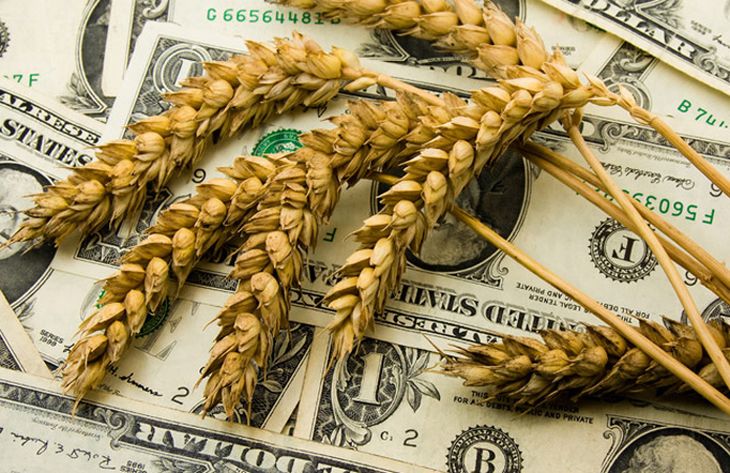Ukraine tensions generate grain market uncertainty

There is nothing like the prospect of a global conflict to spice up a grain market that is already jumping at shadows. Political tension between Russia and Ukraine was a primary ingredient in the wheat and corn futures price rally last week as grain traders across the globe closely analysed the potential market consequences. Any escalation in the conflict threatens to disrupt grain exports out of the Black Sea region. It could also push crude oil and natural gas prices higher. Elevated natural gas prices could push up nitrogen fertiliser prices which are already very high. Higher crude oil prices will also make it more attractive for consumers to use more biofuels. More demand for biofuels increases demand for the grains and vegetable oils from which they are produced.
Russia has reportedly amassed around 125,000 troops along its western border with Ukraine over the past few months, raising the ire of the west. The political rhetoric is in full swing, with the White House warning that Russia could launch an attack on Ukraine at any time. On the other hand, Russia says it has no plans to invade and the US has no reason to be concerned.
But at the same time, Russia is demanding security guarantees from NATO. The Kremlin’s demands include a legally binding agreement to halt NATO’s eastward expansion and a withdrawal of NATO troops from countries such as Poland and the Baltic states, which were once part of the Soviet Union.
Russia has seized Ukrainian territory before. It annexed the Crimean Peninsula in 2014, following the Revolution of Dignity, culminating in the ousting of the country’s pro-Russian president Viktor Yanukovych. This led to the installation of a pro-Russian government in Crimea, the Crimean status referendum and a declaration of independence from Ukraine in March 2014.
US secretary of state Antony Blinken and Russian foreign minister Sergei Lavrov held talks in Geneva late last week to find a diplomatic solution to Russia’s security concerns. While no agreement was reached, there was reportedly a conciliatory tone and no ultimatums, indicating that both sides were trying to keep tensions at bay. The United Kingdom and the United States governments had previously warned that Russia would face serious consequences if there was an incursion. Economic sanctions remain the key option, but scepticism is growing as to whether they will actually deter the Kremlin. Both the US and Europe have had sanctions in place against Russia since the Crimean invasion in 2014.
The Chicago Board of Trade was closed last Monday to celebrate Martin Luther King Junior Day. But wheat futures shot up in Tuesday and Wednesday’s trade before closing the week with two small down sessions. The March wheat contract finished last week at US$7.80 per bushel, up 5.2 per cent from the previous Friday’s close after briefly touching 802.75c/bu in Thursday’s trade. The March corn contract on the Chicago exchange rose in all four trading sessions last week, after closing the previous week with an up day. Trade last Friday concluded with the contract at US$6.1625/bu, an increase of 4pc, or US$0.2325c/bu across the week.
Ukraine has been known as Europe’s breadbasket for centuries, being home to some of the most fertile lands on the planet. However, a substantial proportion of Ukraine’s most productive agricultural land lies in its eastern provinces, bordering Russia, making them the most vulnerable to attack. In fact, some of the border provinces are already occupied by Russian and Russian supported forces.
The Black Sea region is also a huge grain export hub, for wheat in particular. The United States Department of Agriculture estimates Russia and Ukraine will collectively account for 29pc of global wheat trade in the 2021-22 marketing year, despite the Russian export restrictions. In its latest update, the USDA forecasts Russia and Ukraine to ship 35 million tonnes (Mt) and 24.2Mt, respectively, this season.
However, Ukraine has already shipped a significant proportion of its expected 2021-22 export program. According to data released by the agriculture ministry last Friday, 36.1Mt of grain has been exported since the 2021-22 marketing season began on July 1, an increase of 27.7pc over the same period in the 2020-21 season.
The latest export data put Ukraine wheat shipments at 16.3Mt between July 1 2021 to January 17 2022. That is 67.4pc of the USDA’s projected 2021-22 export program and was just shy of total wheat exports for the entire 2020-21 marketing year. The potential impact of a Black Sea conflict on global coarse grain supply will be similar. Ukraine has just harvested a record crop of 42Mt, and they are forecast to export 33.5Mt, or 16.4pc of total global trade this season. The data released last week put corn exports at 13.7Mt to January 17, or almost 41pc of forecast
shipments.
Barley exports out of the region are expected to account for almost 31 per cent of global trade this season. That comprises 6Mt out of Ukrainian ports and 4.5Mt via Russian ports. But like wheat, the Ukraine export program has been running hot since harvest with 5.4Mt, or 90pc of export projections already shipped. The Ukraine standoff is unlikely to be resolved quickly. All of the toxic factors that precipitated this crisis remain in play. Putin is desperate to stop Ukraine from becoming a thriving, fully independent democracy.
Few people want conflict, but diplomacy has its limitations. In the meantime, there is no more potent driver of markets than uncertainty.
Read also
Wheat in Southern Brazil Impacted by Dry Weather and Frosts
Oilseed Industry. Leaders and Strategies in the Times of a Great Change
Black Sea & Danube Region: Oilseed and Vegoil Markets Within Ongoing Transfor...
Serbia. The drought will cause extremely high losses for farmers this year
2023/24 Safrinha Corn in Brazil 91% Harvested
Write to us
Our manager will contact you soon



